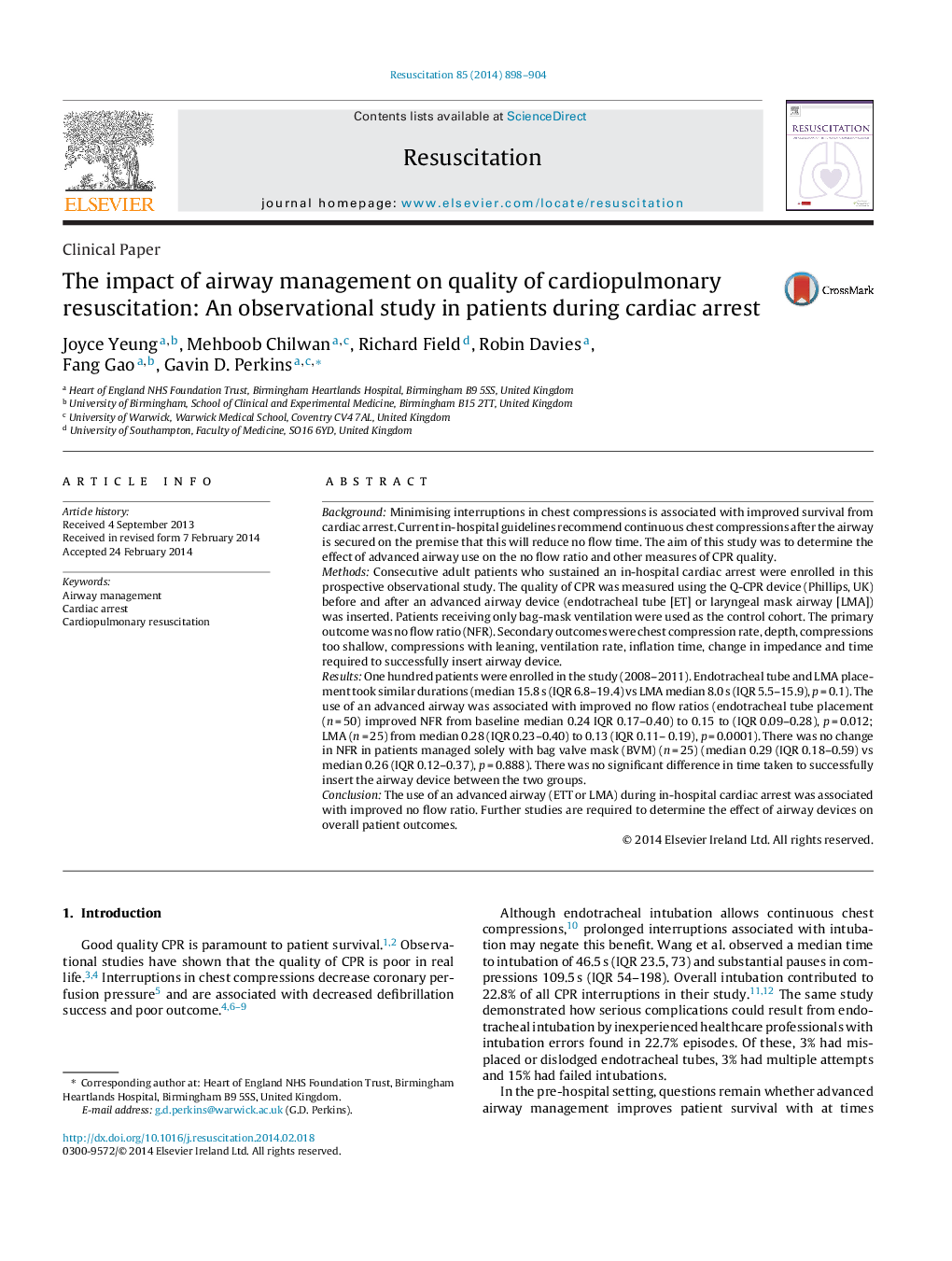| کد مقاله | کد نشریه | سال انتشار | مقاله انگلیسی | نسخه تمام متن |
|---|---|---|---|---|
| 5998467 | 1181442 | 2014 | 7 صفحه PDF | دانلود رایگان |
BackgroundMinimising interruptions in chest compressions is associated with improved survival from cardiac arrest. Current in-hospital guidelines recommend continuous chest compressions after the airway is secured on the premise that this will reduce no flow time. The aim of this study was to determine the effect of advanced airway use on the no flow ratio and other measures of CPR quality.MethodsConsecutive adult patients who sustained an in-hospital cardiac arrest were enrolled in this prospective observational study. The quality of CPR was measured using the Q-CPR device (Phillips, UK) before and after an advanced airway device (endotracheal tube [ET] or laryngeal mask airway [LMA]) was inserted. Patients receiving only bag-mask ventilation were used as the control cohort. The primary outcome was no flow ratio (NFR). Secondary outcomes were chest compression rate, depth, compressions too shallow, compressions with leaning, ventilation rate, inflation time, change in impedance and time required to successfully insert airway device.ResultsOne hundred patients were enrolled in the study (2008-2011). Endotracheal tube and LMA placement took similar durations (median 15.8 s (IQR 6.8-19.4) vs LMA median 8.0 s (IQR 5.5-15.9), p = 0.1). The use of an advanced airway was associated with improved no flow ratios (endotracheal tube placement (n = 50) improved NFR from baseline median 0.24 IQR 0.17-0.40) to 0.15 to (IQR 0.09-0.28), p = 0.012; LMA (n = 25) from median 0.28 (IQR 0.23-0.40) to 0.13 (IQR 0.11- 0.19), p = 0.0001). There was no change in NFR in patients managed solely with bag valve mask (BVM) (n = 25) (median 0.29 (IQR 0.18-0.59) vs median 0.26 (IQR 0.12-0.37), p = 0.888). There was no significant difference in time taken to successfully insert the airway device between the two groups.ConclusionThe use of an advanced airway (ETT or LMA) during in-hospital cardiac arrest was associated with improved no flow ratio. Further studies are required to determine the effect of airway devices on overall patient outcomes.
Journal: Resuscitation - Volume 85, Issue 7, July 2014, Pages 898-904
